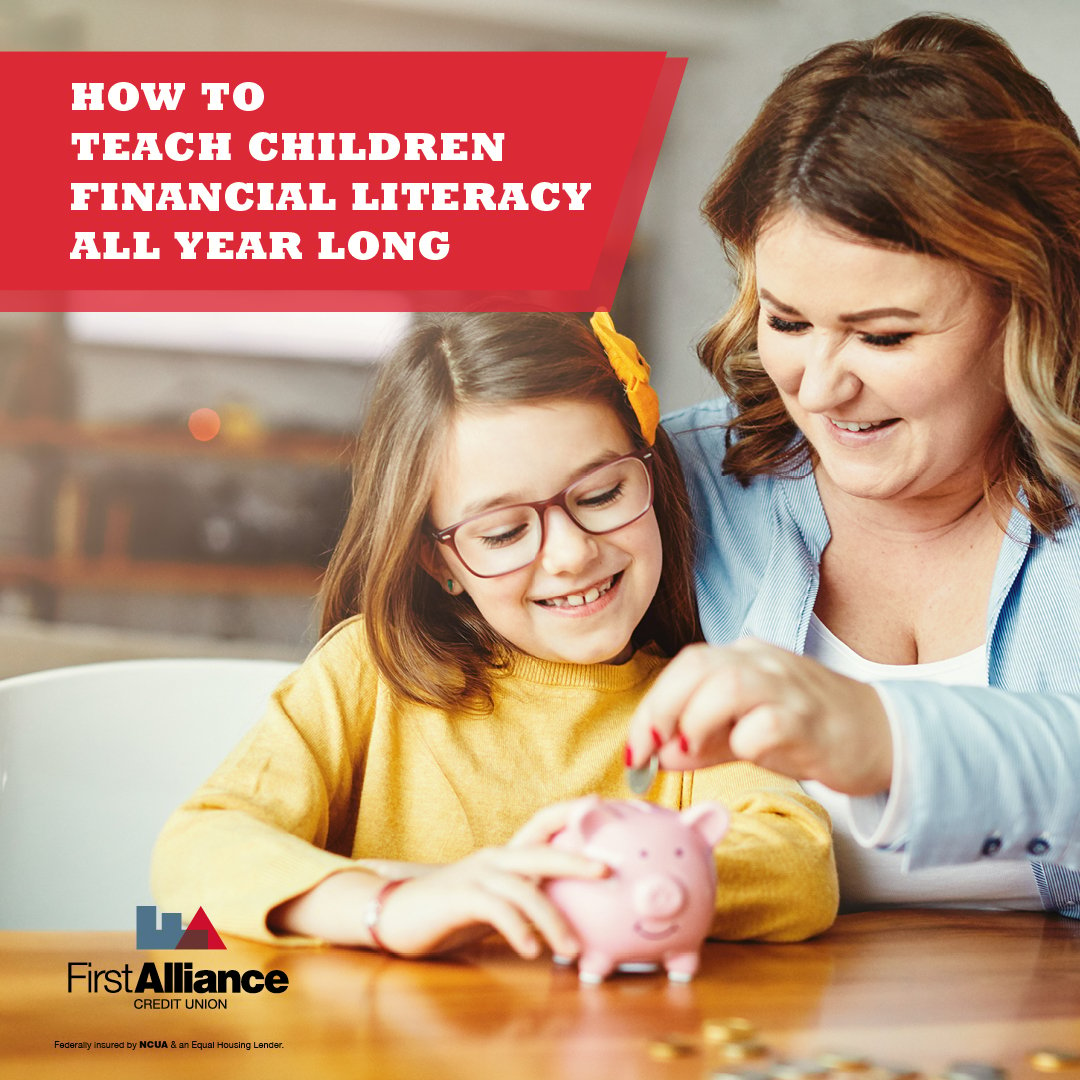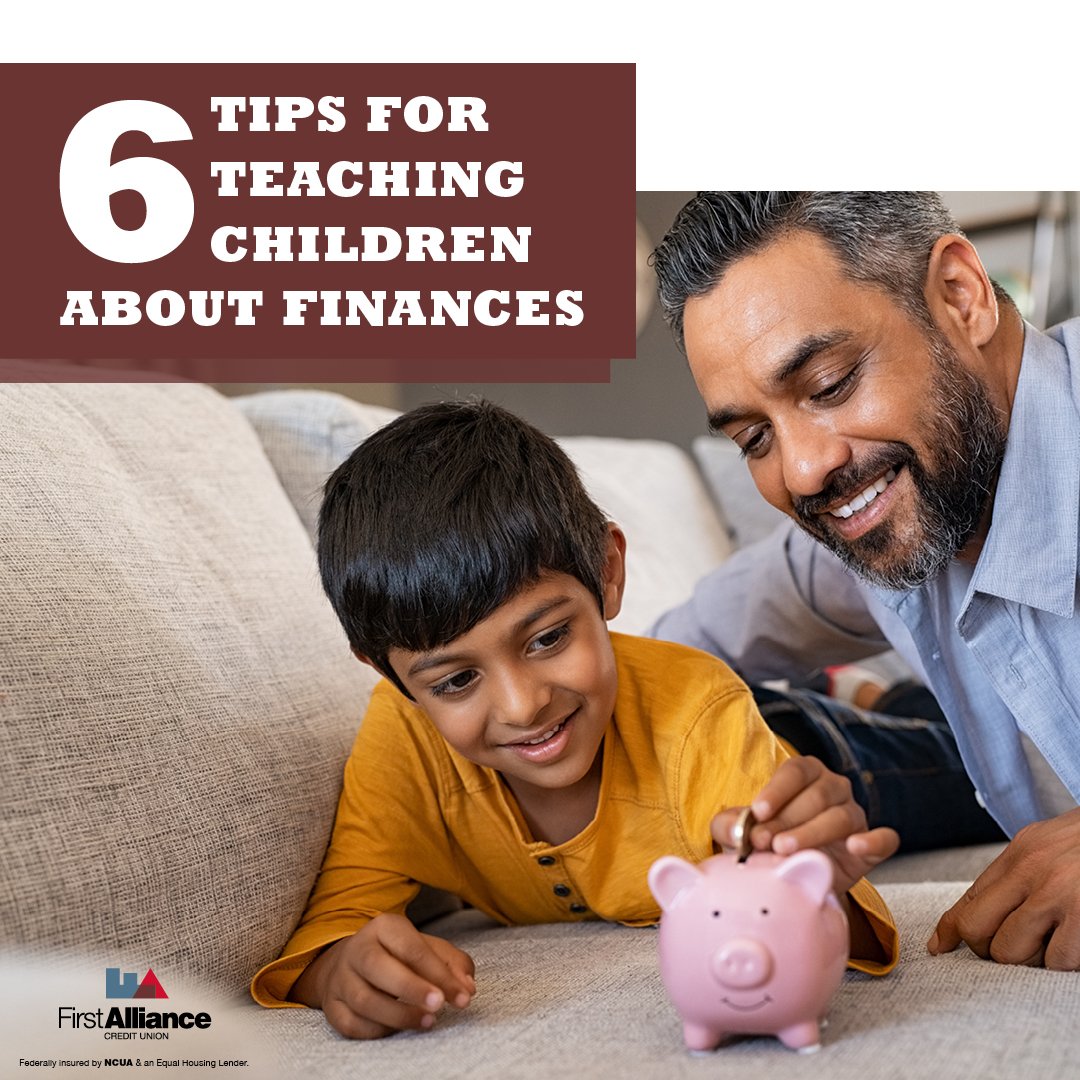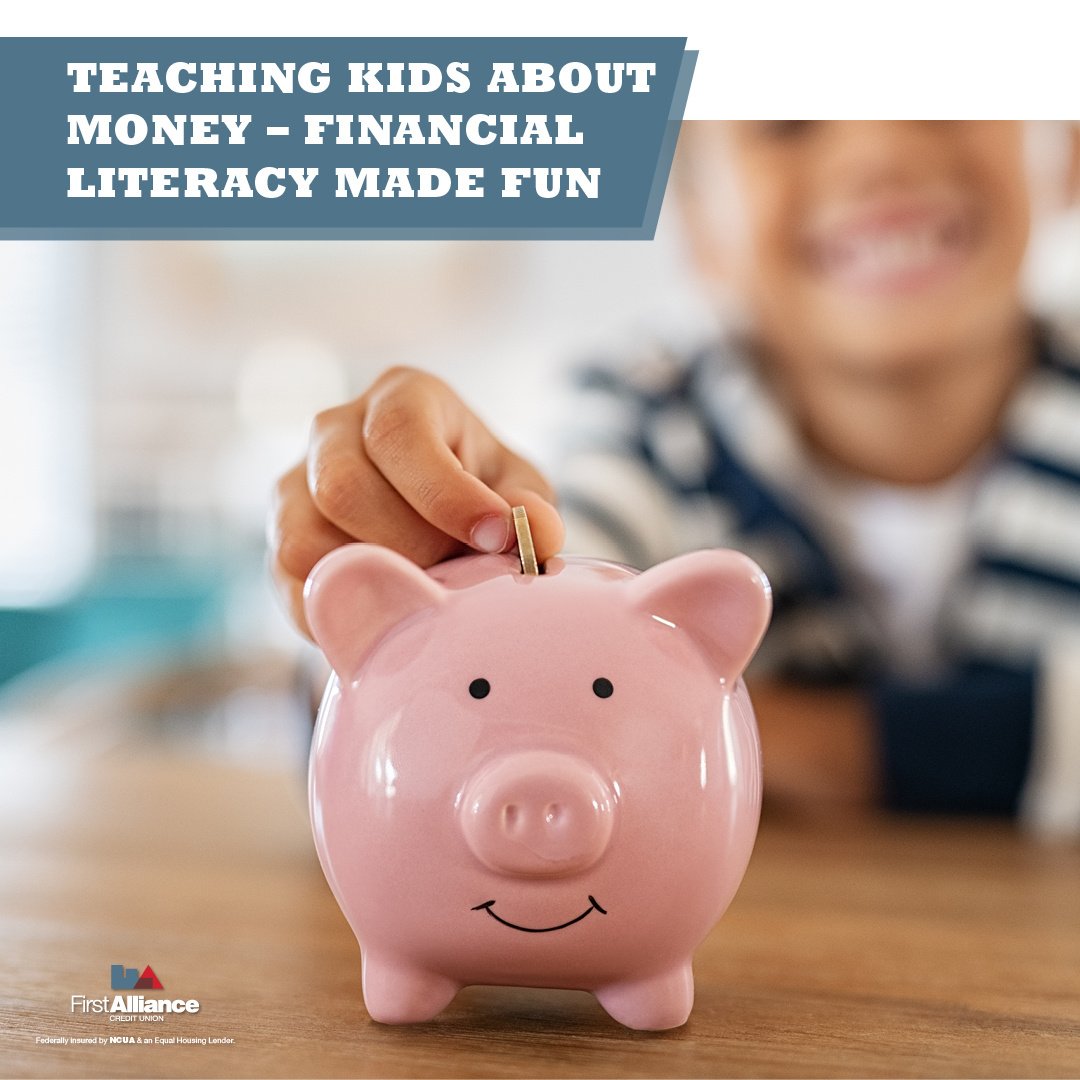6 Tips for Teaching Children About Finances
Finances for children? YES! Teaching your kids about money is an important part of parenting. Often times people graduate from high school, and even...
3 min read
 Chris Gottschalk
:
Mar 23, 2023 4:45:00 AM
Chris Gottschalk
:
Mar 23, 2023 4:45:00 AM

April is Youth Financial Literacy month, and as part of this several credit unions, including First Alliance, are putting on programs to help children of all ages learn about managing money. However, just because April ends doesn’t mean you have to stop teaching children financial literacy. In fact, there are plenty of opportunities to teach children financial literacy every month of the year.

During Youth Financial Literacy month, we try to teach children the basics of good financial literacy through the principles of save, share, spend. In other words, when children get money, they should save part of it, donate part of it and the rest they can spend on whatever they like. This is also sneakily teaching children how to make a budget.
If you really want to set your children up for financial success, make sure they keep dividing up their money between saving, spending and sharing after Youth Financial Literacy month ends. This won’t just make budgeting a habit—it will also help them understand they’re in control of their money. They get to decide how to use the money they make, and they’ll feel good about making responsible choices.
Once children are comfortable with the idea of dividing their money between different categories, you can help them add more categories to their budget. Perhaps they can create two or three different categories for different financial goals, or they might want to create different spending categories such as toys, video games and books.
You can also use your children’s allowances to teach them about financial literacy. Instead of simply giving them money each time you get paid, tie their allowance to the chores that they do. This will help them understand the concept of having to earn money.
If you really want to help your children understand the concept of earning money, you can break down their allowance and show them how much money they get for completing each chore. By doing this, your kids will understand the value of their work, and that the harder or more important a chore is, the more it pays.
When deciding how much to give your children for an allowance, you should also ask yourself:
You can also help your kids learn about money management by involving them in your shopping. You can start by helping them plan your shopping. Talk about what you want to get at the grocery store and have them help you put together a list of groceries you plan to get.
While you’re at the store, show your children the difference in price between groceries. Show them the difference in price between brand name groceries and store brands and ask which one costs less.
Finally, show your child how much they can save on clearance items and bargains. For instance, you can show them how much less candy for Halloween and Valentine’s Day costs after the holidays are over. You can also walk by the clearance section at the start of your shopping trip and see if it contains any of the items on your list.
Okay, a lot of you are probably rolling your eyes at this suggestion. However, the world is increasingly moving toward cashless transactions, and it’s almost inevitable that your teenager will get a credit card sooner or later. By teaching your teenager how to use a credit card responsibly, you can help them avoid the pitfalls of credit card ownership that many teens fall into.
The first thing you should do when you give your kid a credit card is to set some boundaries with them. Set limits on where they can and cannot use their card, as well as a limit on how much they can charge to your card each transaction. If your credit card provider has a card control app like First Alliance’s MyCards, you can use this to set the limits yourself.
Once your teenager has a credit card, stress the importance of paying on time, every time. You can sit down with them when the monthly credit card bill comes due, and have them total up all their purchases. You might even want to show the contrast between the total amount due and the minimum payment, and help them calculate how much interest they would owe if they only pay the minimum.
Finally, take some time and explain credit scores to your teen. Stress the importance of having a good credit score, and show them how using a credit card responsibly contributes to a high credit score.
Once Youth Financial Literacy month is over, you can continue teaching your children about financial literacy during the rest of the year. You can start by keeping them in the habit of saving, spending and sharing any money they earn, and help them earn money by giving them an allowance in return for doing chores. You can even take your children shopping with you and showing them how to get the most out of their money.
You can also help your children learn financial literacy when you become a member of First Alliance Credit Union. You can help your child set up a youth account, and from there you can show them how to deposit money using our Advisor Supported Kiosks. You can even help them to set up financial goals using our free downloadable guide to goal setting.

Finances for children? YES! Teaching your kids about money is an important part of parenting. Often times people graduate from high school, and even...
-3.png)
While children’s favorite holiday is probably Christmas, Halloween runs a close second. After all, what other day do you get to dress up and get free...
 Read More
Read More